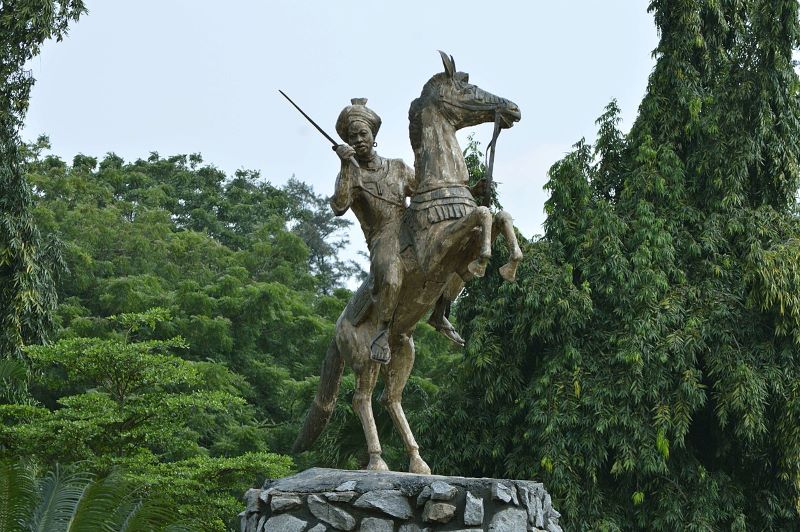Statue of Queen Amina of Zaria in Lagos.
Omoeko Media, CC BY-SA 4.0, via Wikimedia Commons
When we talk about Africa’s past, it often centers around colonization and how the Europeans dominated the continent. Long before their arrival, Africa was home to powerful ancient kingdoms and empires, some of which were led and protected by women.
These were women who commanded armies, negotiated treaties, established laws, and nurtured periods of incredible prosperity in their lands. What these women demonstrated was simple: leadership is not defined by gender but by courage, discipline, and an unwavering commitment to safeguard their communities.
Inspired by true events, the 2022 film The Woman King sparked worldwide interest in the overlooked history of the African women who led empires and armies and fiercely defended their communities. Its depiction of strong and courageous Black female warriors was praised on social media and in reviews. For many, it was a revelation, taking us back to a time when female African warriors reigned supreme.
These women defied societal expectations, challenged norms, and stood as a pillar of strength for their people against outside forces. We will now take a look at five such African women who fought for their people, commanded respect, and left an unforgettable mark in history.
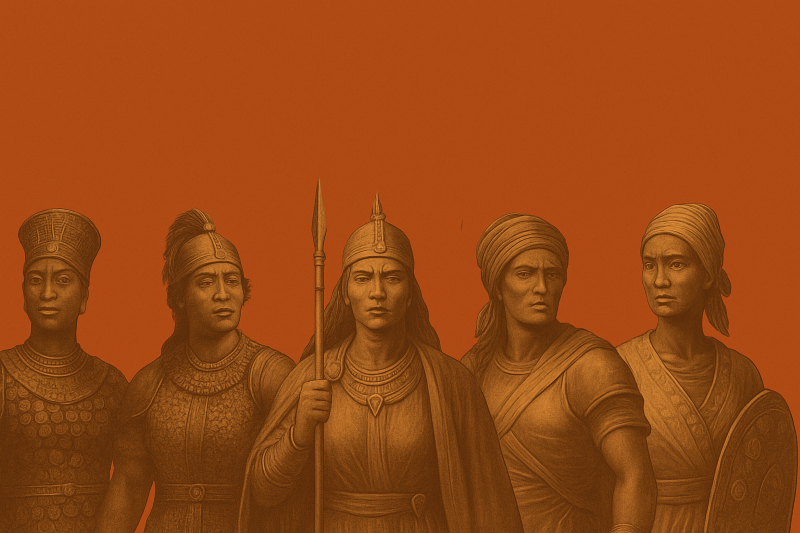
Queen Amina of Zaria (1533-1610)
Commonly known as the warrior queen, Amina expanded the territory of the Hausa people of North Africa through military campaigns, earning the moniker “Amina, the Conqueror.” She was a legendary military leader and warrior queen. Some accounts have it that she led a personal guard of female warriors and commanded an elite cavalry unit.
She was born around 1533 in Zazzau, which is in the present-day city of Zaria in Kaduna State, Nigeria. The eldest of three children, she had a brother named Karama and a sister named Zaria.
After their parents died in 1566, Karama was named the King of Zazzau through tradition, and Amina became the lead warrior of the kingdom’s army. During this time, she gained a fierce reputation and personal wealth outside of her royal family connection.
She was crowned Queen of Zaria in 1576 after her brother’s death, and within three months, expanded the kingdom’s borders through a series of successful strategic battles. Her first military operation was launched just a few months after she ascended the throne.
What was achieved during her reign?
- With 20,000 men under her command, they conquered towns to the north and south in the Nupe and Jukun kingdoms.
- Zaria dominated trade routes connecting western Sudan with Egypt to the northeast and Mali to the north.
- Her reign witnessed advancements in agriculture, trade, and infrastructure, solidifying the region’s prosperity for generations.
- Among her innovations were the introduction of protective armor to the Zazzau Army and the construction of defensive walls around Zazzau, which became known as’ Amina’s walls’.
Queen Amina reigned for 34 years and died in battle in Altagara, near Bida, in 1610 at the age of 77. There is a government secondary school in Kaduna named Queen Amina College, and female dormitories called Queen Amina Hall at the University of Lagos and Ahmadu Bello University. A statue is also dedicated to her legacy at the National Arts Theatre in Lagos State.
Queen Nzinga of Angola (1583-1663)
Ana de Sousa Nzinga was born around 1583 in Kabasa, the capital of the Kingdom of Ndongo (now Angola), into the royal family of Ndongo. Nicknamed “Njinga Mbande,” meaning “Queen who turns men into women,” she refused to bow to Portuguese slave traders, waging a guerrilla war for decades, forming strategic alliances, and mastering guerrilla tactics. She is one of the most celebrated African women to resist European colonization.
Nzingha had two sisters: Mukumbu or Lady Barbara and Kifunji or Lady Grace, and a brother, Mbandi Kiluanji, who took over the throne after their father died in 1617. As the new king, Mbandi felt paranoid that one day Nzinga’s only son (a baby) would plot to have him assassinated, so he ordered him killed. He then forcibly had Nzinga and her two sisters sterilized, ensuring that they would never have children.
Nzinga was later crowned the ruler in 1624 after her brother’s death, becoming one of the few female rulers in African history. During her reign, she refused to allow the Portuguese to control her nation.
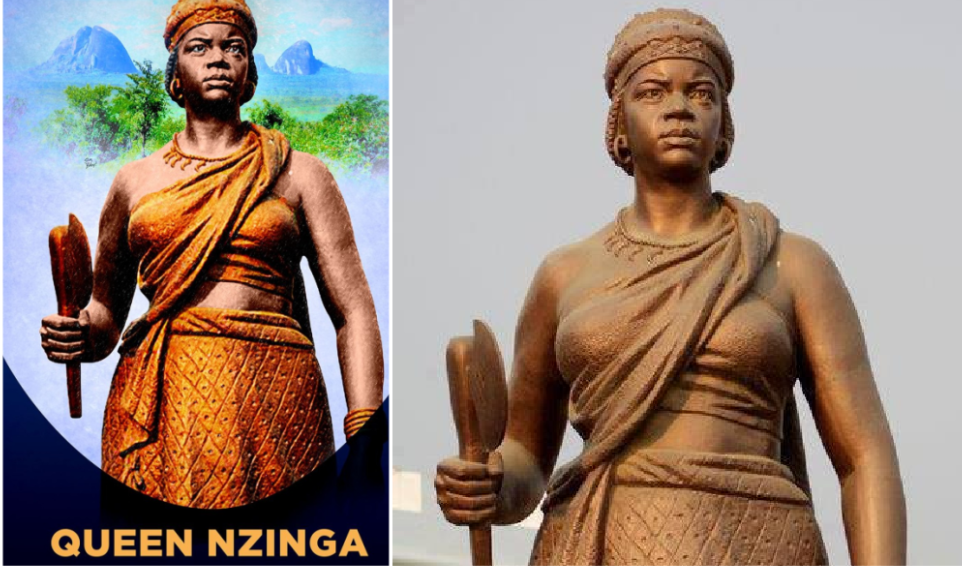
Photo source: Facebook / Black History Studies
What was achieved during her reign?
- She managed to halt Portuguese slave raids in her kingdom through clever tactics.
- She led her army against the Portuguese, initiating a thirty-year war against them.
- She forged an alliance with the Dutch and, with their help, defeated a Portuguese army in 1647.
- Nzinga was instrumental to the successful 20th-century armed resistance against the Portuguese that resulted in independent Angola in 1975.
Despite repeated attempts by the Portuguese and their allies to capture or kill Queen Nzinga, she died peacefully in her eighties on December 17, 1663, marking the end of an era.
Her legacy lives on; she has been featured in children’s books, video games, and even a Netflix docudrama series. A street in Luanda is named after her, there are a series of coins in tribute to her role in defending her people, and the government placed a statue of her in Kinaxixi in 2002 to celebrate the 27th year of Angola’s independence.
Yaa Asantewaa of the Ashanti (1840-1921)
Yaa Asantewaa, Queen Mother of Ejisu, was born in the 1840s and ascended to the title Queen Mother sometime in the 1880s. The appointment came from her brother, Nana Akwasi Okpese, the Ejisuhene (the ruler of Ejisu), a respected and powerful position in Asante.
As Queen Mother, this courageous woman held many duties, including being the Gatekeeper of the Golden Stool, a powerful symbol of the Ashanti kingdom.
When her brother died in 1894, Yaa Asantewaa used her right as Queen Mother to nominate her grandson as Ejisuhene. In 1896, Asantewaa became regent of the Ejisu–Juaben district when the British exiled him and other members of the Asante government to the Seychelles. British Governor Frederick Hodgson demanded the Golden Stool, and in response, Yaa Asantewaa rallied the chiefs to war with a powerful speech, during which she seized a gun and fired a shot into the air. Subsequently, she was appointed leader and commander-in-chief of the Ashanti forces, a role formerly only held by men.
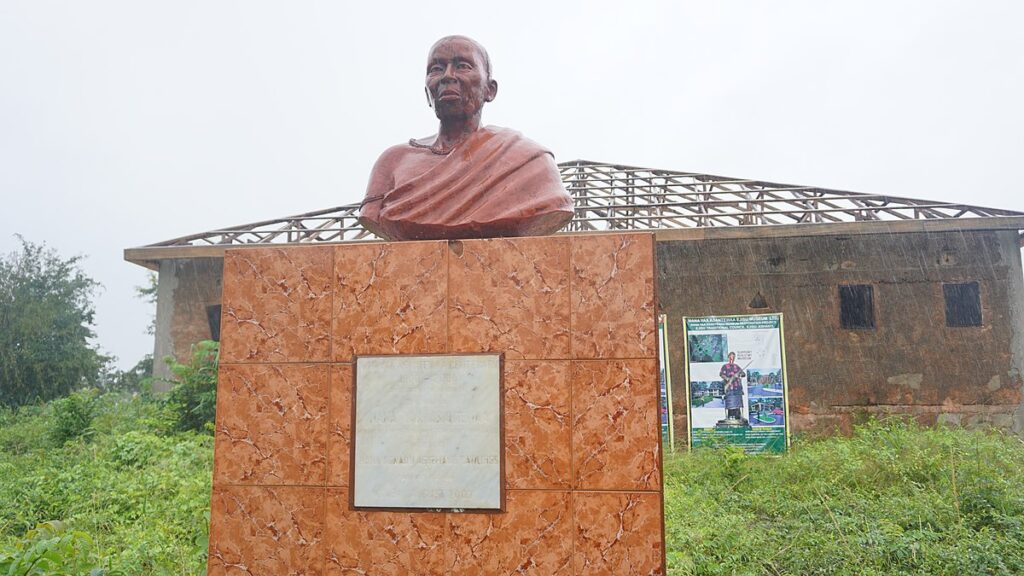
Noahalorwu, CC BY-SA 4.0, via Wikimedia Commons
What was achieved during her reign?
- She raised and commanded an army, including female warriors, rallying both men and women to fight against British forces.
- Her activism and military tactics contributed to the liberation of her people and country.
- She led the Ashanti rebellion (War of the Golden Stool), a courageous fight against British colonialism, which immortalized her as a beloved figure in Ghanaian history.
Queen Yaa Asantewaa and 15 of her closest advisers were captured during the rebellion and sent into exile to the Seychelles, where she died in 1921.
To commemorate her influence, a museum was opened in her honor in the Ejisu-Juaben District of Ghana in August 2000. Sadly, a fire there on July 23, 2004, destroyed several historical items, including her sandals and battle dress. Similarly, there is an achievement award named after Nana Yaa Asantewaa.
Moremi Ajasoro of Ile-Ife Kingdom, Nigeria
Queen Moremi was a renowned Yoruba queen from the Yorubaland region of modern-day southwestern Nigeria. Details of her birth and death remain obscure, as she hasn’t received much scholarly focus. Much of what we know derives from the folklore surrounding her.
From what was gathered, Moremi was said to be a princess from the town of Offa and lived in the 12th century. She was married to King Omariyan of the Yorubaland region, now modern-day Southwestern Nigeria.
Their kingdom was being raided by the neighboring Ugbos, who enslaved those captured. As a patriot who couldn’t bear to see how unhappy her people and her husband, the king, were, she devised a plan to resolve their plight. She allowed herself to be captured to gather intelligence for her people. When she got what she wanted, she escaped and revealed all to the Yoruba army, who then went on to defeat their enemy. She had to sacrifice her only son, Oluorogbo, to achieve this.
What was achieved during her reign?
- Moremi helped in the successful liberation of the Yoruba people from their neighboring enemy Kingdom.
To this day, she is remembered and revered as a heroine who sacrificed everything for the freedom of her people. She is honored through the Edi festival, with several university halls of residences, teaching halls, and roads named after her. Moremi’s statue was erected in Ile-Ife and is the fourth tallest in Africa.
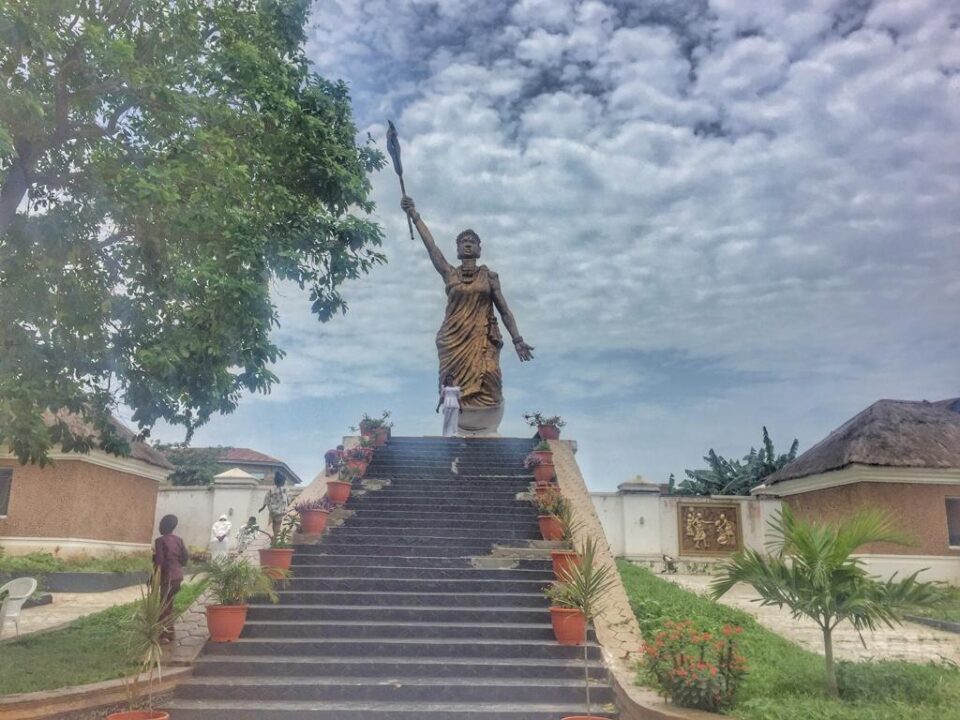
Photo source: Eukoha, CC BY-SA 4.0 via Wikimedia Commons
The Dahomey Amazons
The Dahomey Amazons (also known as the Agojie in the language of the Fon tribe) were an all-female military regiment in Dahomey, a kingdom that thrived in West Africa during the 18th and 19th centuries.
Dahomey was located in present-day Benin and existed until 1904. They were named Amazons by European visitors to the West African region, due to their similarity to the female warriors or Amazons in Greek mythology.
Their emergence was said to have been due to Dahomey’s male population facing high casualties in frequent warfare with neighboring West African states as well as the kingdom being forced to annually give male slaves to the Oyo Empire. They were forbidden from relationships, marriage, and having children.
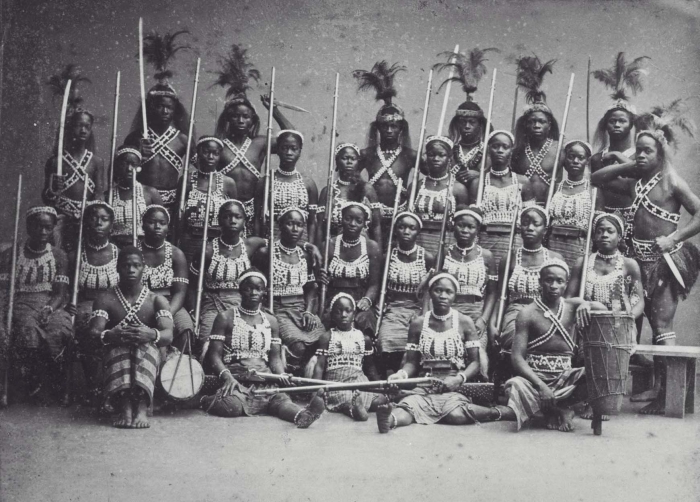
Photo source: Collectie Wereldmuseum (v/h Tropenmuseum), part of the National Museum of World Cultures, via Wikimedia Commons
What the Dahomey Amazons achieved
- This fierce all-female army, known as the Agojie, raided villages under the cover of darkness, took captives, and slashed off resisters’ heads to return to their king as trophies of war.
- Villages were raided with the specific aim of capturing prisoners (with their heads intact) to sell into slavery. As a result, Dahomey grew wealthy and powerful as a major player in the transatlantic slave trade.
- Aside from the slave trade, Dahomey fought to acquire fertile land for farming and to boost its trade in palm oil. Taxes and duties collected from those two ventures helped Dahomey build an imposing military presence.
Their story inspired the 2022 film, The Woman King, starring Viola Davis as a fictionalized leader of the Agojie.

